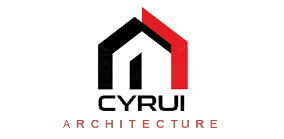Discovering the World of Hardscape Architecture
Hardscape architecture plays a vital role in our outdoor spaces, enhancing both aesthetics and functionality. This discipline focuses on the non-plant elements of landscape design, including patios, walkways, and retaining walls, creating a harmonious balance with the natural environment. As outdoor living areas become increasingly popular, understanding hardscape architecture can help homeowners and builders alike create beautifully structured and usable spaces.
Defining Hardscape Architecture
Hardscape architecture encompasses various elements such as stone pathways, wooden decks, and concrete walls. These features provide structure, organization, and visual appeal to landscaping projects. By integrating hardscape elements, designers can define areas for relaxation, activities, and gardens. The choice of materials plays a crucial role in the overall design, influencing not only aesthetic appeal but also durability and maintenance. Selecting the right materials can make a significant difference in both function and style, leading to beautiful, lasting spaces.
Benefits of Hardscape Features
Incorporating hardscape elements offers numerous benefits. Firstly, they help manage water drainage by directing rainwater away from homes, which reduces flooding and erosion issues. Additionally, hardscape features can create accessible pathways for people of all ages, enhancing the usability of outdoor spaces. From patios to fire pits, these elements provide areas designed for social gatherings and enjoyment. Importantly, hardscapes can also complement plant life, highlighting gardens and adding texture and contrast to the landscape.
Trends in Hardscape Design
The world of hardscape design is constantly evolving, with new trends emerging to enhance outdoor living spaces. Sustainable materials, such as reclaimed wood and permeable pavers, are becoming increasingly popular as homeowners seek environmentally friendly options. Additionally, the integration of outdoor technology, from lighting to heating solutions, adds functionality to these spaces. Designers are also embracing open-concept designs that encourage seamless transitions between indoor and outdoor living, reflecting a growing desire for more connected, expansive spaces.
Conclusion
Hardscape architecture is essential for creating functional and beautiful outdoor environments. By understanding the fundamentals, benefits, and trends in hardscape design, you can make informed choices for your own projects. Whether you’re a homeowner looking to upgrade your garden or a builder aiming to enhance property value, exploring hardscape options can lead to stunning results. Don’t hesitate to dive deeper into this fascinating field and discover how you can transform your outdoor spaces!

